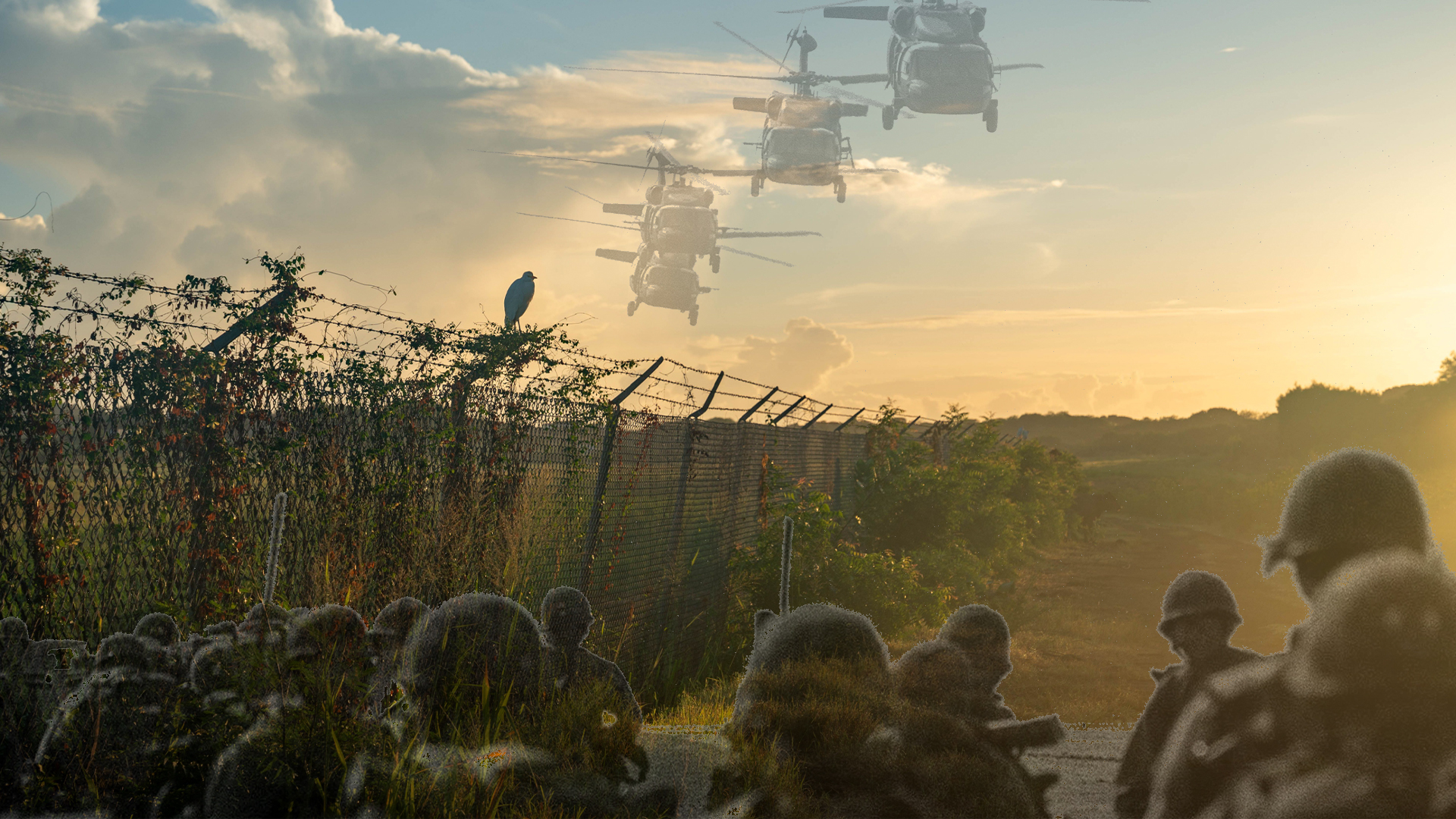

POINT SALINES, Grenada — At 5:36 a.m., hundreds of Army Rangers, loaded down with combat equipment, dropped onto the partially finished airport in Grenada. The island is 12 miles wide and 21 miles long from North to South, and at the time, was packed with Cuban soldiers under the command of Maurice Bishop, who had taken control of the island after a military coup in 1979.
With so many American students attending St. George’s University at the True Blue Campus not far from the airport under construction, President Ronald Reagan and the Organization of Eastern Caribbean States (OECS) grew concerned about the threat of the Cuban military developing a base and the Soviets who were helping them via weapons, ammunition, and training.
The decision was made to invade Grenada to liberate the island from the communist death grip that had developed.
I’ve been on the ground reporting from Grenada for the 40th anniversary of Urgent Fury, and have had the chance to talk to many of the Army Rangers and paratroopers who took part in the operation, and residents of the island who lived through the operation — including campus employees. Their memories shed light on not just the heroic actions that day, but the human side of war.

Three days prior to the invasion, the Cubans had been training with anti-aircraft weapons, shooting at silhouettes of helicopters. This caused confusion when U.S. Air Force AC-130 spectre gunships started hitting their anti-aircraft systems. Before long, they realized this wasn’t training.
When the Cubans finally started firing their anti-aircraft weapons at the C-130s rolling in with thousands of paratroopers, some of the faculty and students on campus told me they thought it was the Cubans training again.
Interestingly, no Rangers were killed during the airdrops. Some of the Urgent Fury veterans explained that this was due to the Cubans moving their weapon systems to higher elevations. Because of the minimum pitch of the weapons, and the c-130s flying low at approximately 470-500 feet above ground level, they couldn’t get all their guns aimed at the American airplanes coming in or the Rangers floating down to the airport under canopy. Had the weapons stayed at the level of the airport, the C-130’s flight path would have taken them right into Cuban crosshairs.
Subscribe to Task & Purpose Today. Get the latest military news and culture in your inbox daily.
A few of the Ranger medics still remember the medical ingenuity required to be successful during Urgent Fury. It’s clear they were well-trained and able to think on the fly when they didn’t have or ran out of the needed medical supplies. For example, they turned a door from the enemy barracks into a gurney to transport a Ranger who underwent a leg amputation. They secured a chest tube on an enemy soldier with 100-mile-an-hour tape. They even set up an aid station in the science lab of the True Blue Campus and directed the medical students — who were not yet doctors — to help the medics as they worked on casualties.
Operation Urgent Fury was also the first major use of the Black Hawk helicopter; three were shot down while the Rangers assaulted the Calvigny Barracks, where several enemy soldiers were believed to be. Every building had some sort of damage from the naval gunfire, gunruns, rockets, and other types of attacks executed by the joint task force. After the battle, Rangers searched the barracks for intelligence and weapons. They found photos of children armed to the teeth with machine guns and ammo, valium, condoms, and some other type of drug they could not identify.
Several tragic events took place during the operation, but there were plenty of horrific acts committed before the U.S. military arrived on the island. The execution of civilians and what happened to their remains still stands out to the veterans to this day.
Former Prime Minister of Grenada Maurice Bishop was among the people believed to have been murdered, though it’s contested that Bishop’s body was identified by U.S. military forces on the island during the days following the airborne and sea assault. But, several Rangers who are attending the 40th anniversary of Operation Urgent Fury recall how the investigators searching for Bishop’s body actually came across six bodies. They allegedly could not identify the bodies because they had all been decapitated and their hands and feet cut off. Some of the local Grenadians believe Bishop’s body was actually dumped into the ocean, never to be seen again.
After 40 years, it’s these small memories and many more that stand out to those who have returned to Grenada to remember. Today, they will attend a memorial service.
The latest on Task & Purpose
- Navy fires captain of guided-missile cruiser USS Lake Erie
- The M10 Booker Combat Vehicle is definitely a tank, says Gen. Abrams
- Why Navy SEALs wear a trident and other facts about life as a frogman
- A-10 Warthogs arrive, more U.S. forces coming amid Israel-Gaza fighting
- Army plans to cut ‘unnecessary maintenance’ on vehicles and weapons
